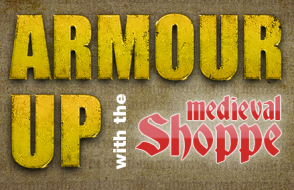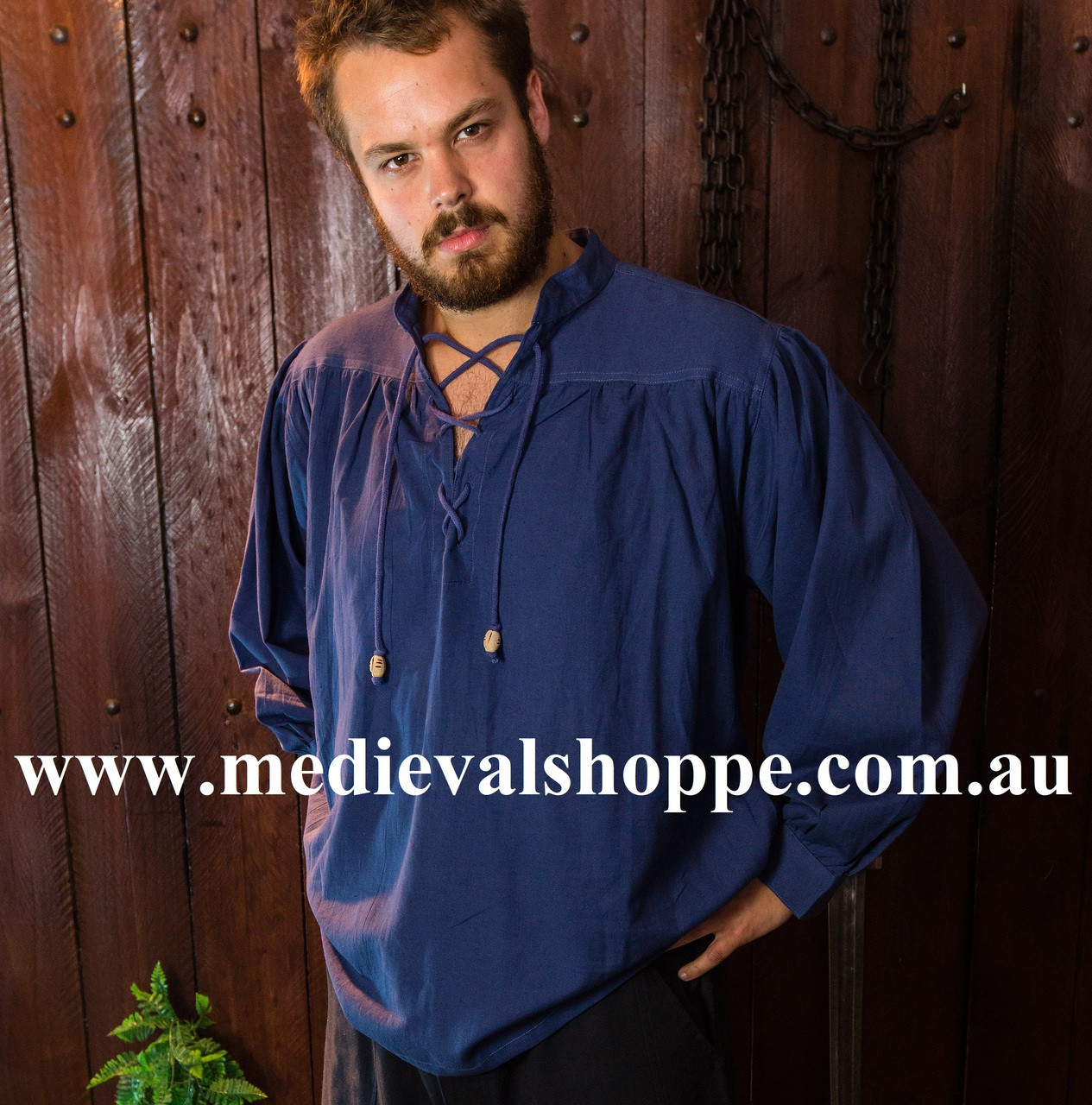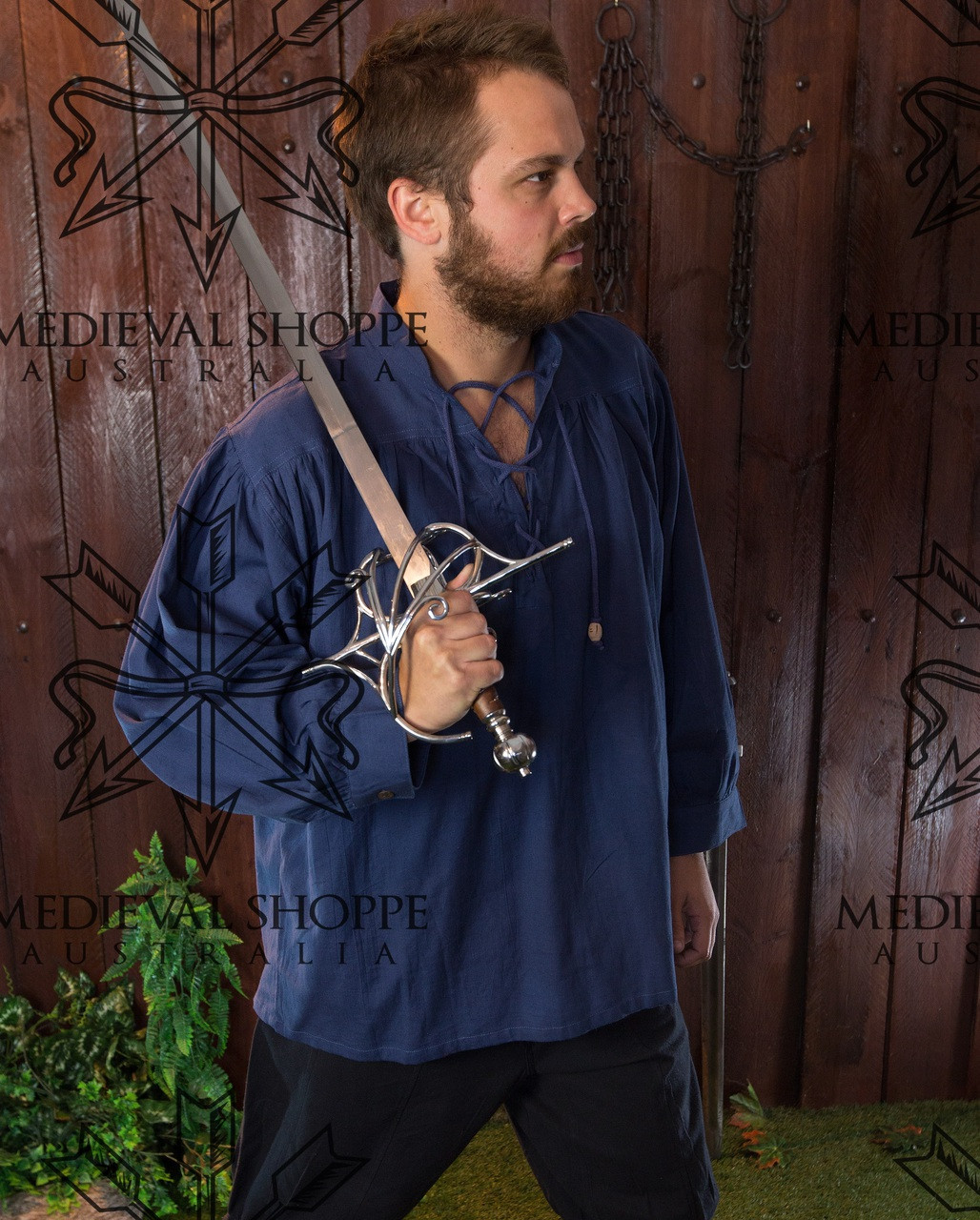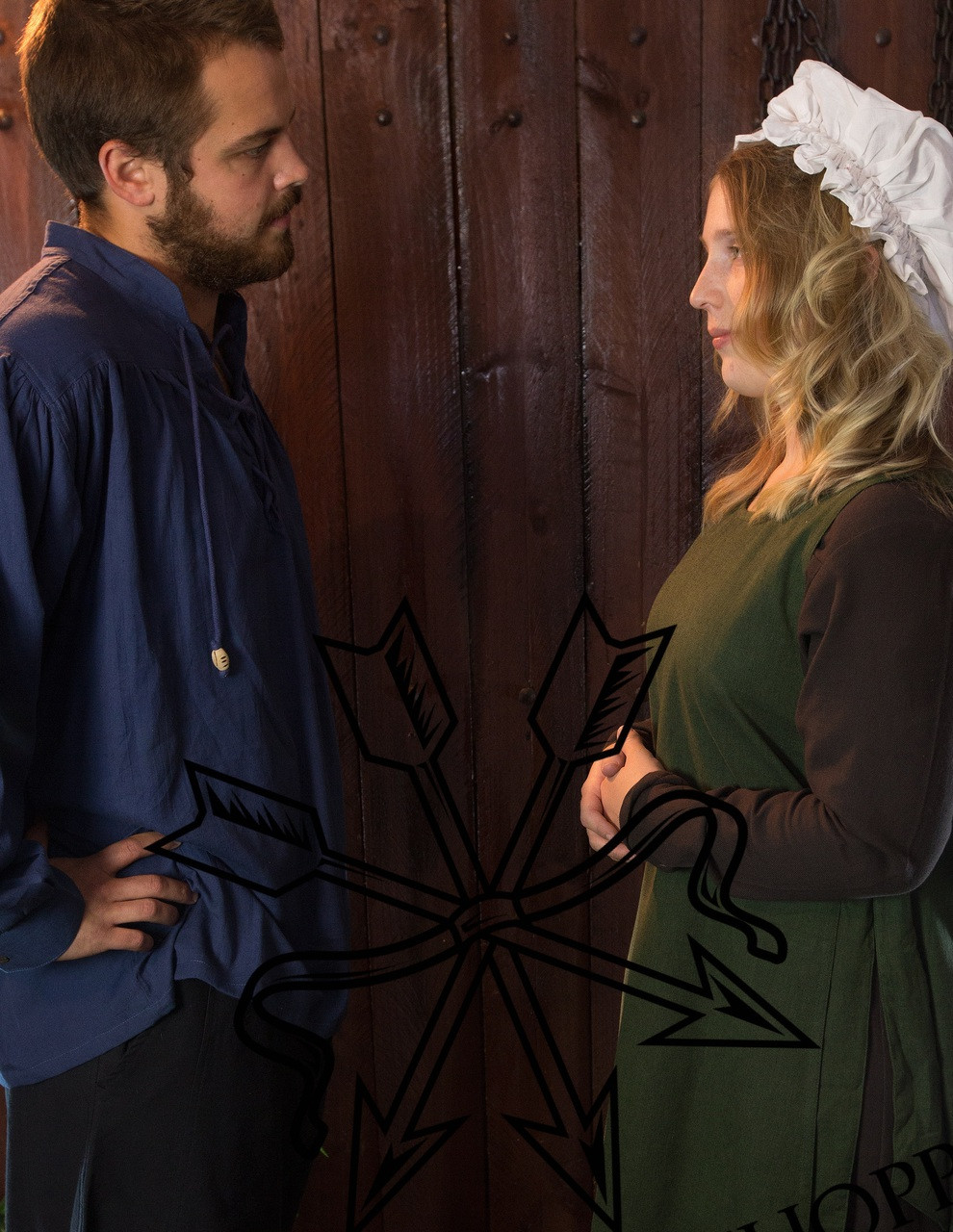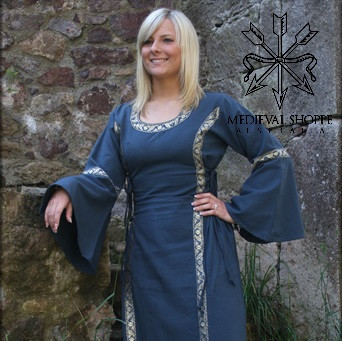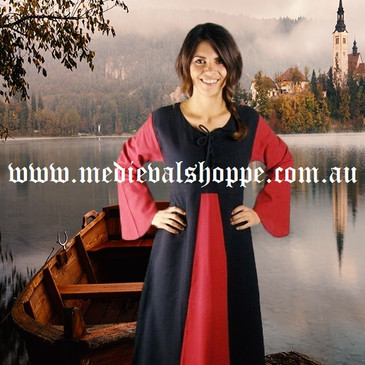-
Product Description
Authentically-tailored linen/cotton shirt suitable for use with many period outfits.
(cm) Chest Overall Length Arm Length Waist Circumerence S 132 75 56 134 M 136 76 57 140 L 142 77 59 144 XL 154 86 64 152 XXL 162 88 65 162 XXXL 164 88 66 164 With sewn buttonholes
Cord with wooden beads on chest
88% cotton 12% linen
Dry clean only or dip in tepid water and leave to dry in strong sunlight
King Louis IX of France (1214–1270), became the first king of France to regularly dress in blue. This was copied by other nobles. The coat of arms of the kings of France became an azure or light blue shield, sprinkled with golden lilies. Once blue became the colour of the king, it also became the colour of the wealthy and powerful in Europe. In the Middle Ages in France and to some extent in Italy, the dyeing of blue cloth was subject to license from the crown or state. In Italy, the dyeing of blue was assigned to a specific guild, the tintori di guado, and could not be done by anyone else without severe penalty. The wearing of blue implied some dignity and some wealth.
While blue was an expensive and prestigious colour in European painting, it became a common colour for clothing during the Renaissance. The rise of the colour blue in fashion in the 12th and 13th centuries led to the creation of a thriving blue dye industry in several European cities. They made a dye called pastel from woad, a plant common in Europe, which had been used to make blue dye by the Celts and German tribes. Blue became a colour worn by domestics and artisans, not just nobles. In 1570, when Pope Pius V listed the colours that could be used for ecclesiastical dress and for altar decoration, he excluded blue, because he considered it too common! By the end of the Middle Ages woad began to be replaced by Indian indigo - and not before time: the process of making blue dye with woad was particularly long and noxious- it involved soaking the leaves of the plant for three days to a week in human urine, ideally urine from men who had been drinking a great deal of alcohol, which was said to improve the colour. The fabric was then put out in the sun, where as it dried, it turned blue. Nasty! You will be glad to know that this shirt has been made with modern chemical dyes.
Some medieval clothing websites may carry “.au” at the end of their address and have pricing in Australian dollars. They may even offer free postage, giving the impression that you’re dealing with an Australian business: but when you search the site for contact details, such as an address or telephone number, these are strangely absent! This is because such websites are located in places like Germany, India or China. When you order from such businesses, you are essentially being tricked into placing an overseas order, which of course means the delivery will take weeks, the risk of loss or damage is increased, and if there’s an issue with the apparel upon arrival (wrong item, bad quality, wrong size or colour) then sending it back will not be a realistic proposition. With The Medieval Shoppe you are dealing with a truly Australian owned and Australian located business.
-
Product Reviews
